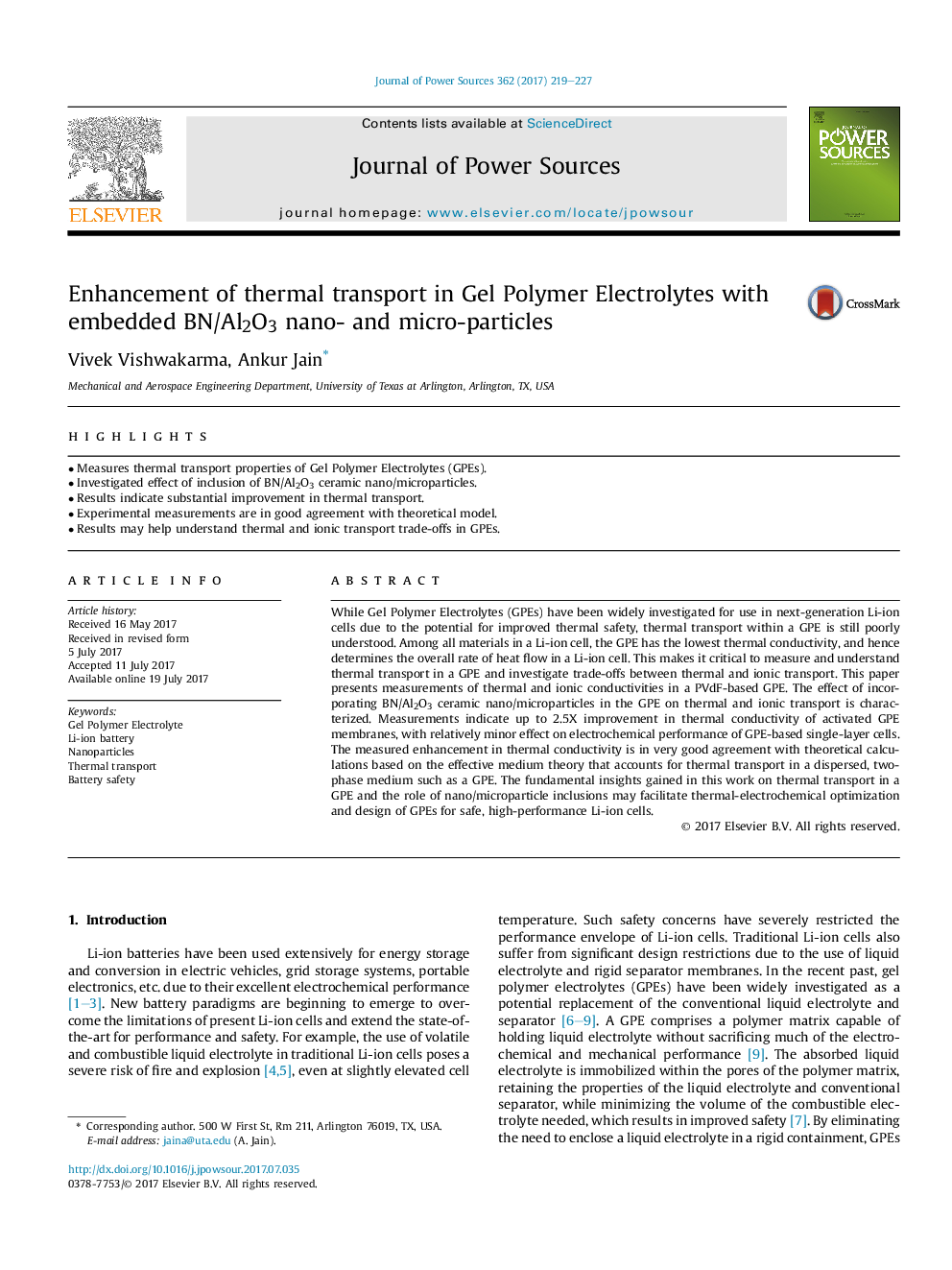| Article ID | Journal | Published Year | Pages | File Type |
|---|---|---|---|---|
| 5148811 | Journal of Power Sources | 2017 | 9 Pages |
Abstract
While Gel Polymer Electrolytes (GPEs) have been widely investigated for use in next-generation Li-ion cells due to the potential for improved thermal safety, thermal transport within a GPE is still poorly understood. Among all materials in a Li-ion cell, the GPE has the lowest thermal conductivity, and hence determines the overall rate of heat flow in a Li-ion cell. This makes it critical to measure and understand thermal transport in a GPE and investigate trade-offs between thermal and ionic transport. This paper presents measurements of thermal and ionic conductivities in a PVdF-based GPE. The effect of incorporating BN/Al2O3 ceramic nano/microparticles in the GPE on thermal and ionic transport is characterized. Measurements indicate up to 2.5X improvement in thermal conductivity of activated GPE membranes, with relatively minor effect on electrochemical performance of GPE-based single-layer cells. The measured enhancement in thermal conductivity is in very good agreement with theoretical calculations based on the effective medium theory that accounts for thermal transport in a dispersed, two-phase medium such as a GPE. The fundamental insights gained in this work on thermal transport in a GPE and the role of nano/microparticle inclusions may facilitate thermal-electrochemical optimization and design of GPEs for safe, high-performance Li-ion cells.
Related Topics
Physical Sciences and Engineering
Chemistry
Electrochemistry
Authors
Vivek Vishwakarma, Ankur Jain,
